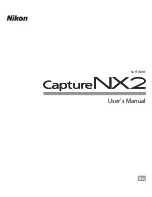
8
Using Microsoft Active Directory
If you use Active Directory service software, configure it to control access to the network. The Active Directory
database is modified to support remote management authentication and authorization. Server Administrator, as well as
Integrated Remote Access Controllers (iDRAC), Remote Access Controllers (RAC), can now interface with Active
Directory. With this tool, you can add and control users and privileges from one central database.
Active Directory Schema Extensions
The Active Directory data exists in a distributed database of Attributes and Classes. An example of a Active Directory
Class is the User class. Some example Attributes of the user class might be the user’s first name, last name, phone
number, and so on. Define every Attribute or Class that is added to an existing Active Directory schema with a unique ID.
To maintain unique IDs throughout the industry, Microsoft maintains a database of Active Directory Object Identifiers
(OIDs).
The Active Directory schema defines the rules for what data can be included in the database. To extend the schema in
Active Directory, install the latest received unique OIDs, unique name extensions, and unique linked attribute IDs for the
new attributes and classes in the directory service from the
Systems Management Tools and Documentation
DVD.
Dell extension is: dell
Dell base OID is: 1.2.840.113556.1.8000.1280
Dell LinkID range is:12070 to 12079
Overview Of The Active Directory Schema Extensions
Dell created classes, or groups of objects, that can be configured by the user to meet their unique needs. New classes
in the schema include an Association, a Product, and a Privilege class. An association object links the user or group to a
given set of privileges and to systems (Product Objects) in the network. This model gives an administrator control over
the different combinations of user, privilege, and system or RAC device on the network, without adding complexity.
Active Directory Object Overview
For each of the systems that you want to integrate with Active Directory for authentication and authorization, there must
be at least one Association Object and one Product Object. The Product Object represents the system. The Association
Object links it with users and privileges. You can create as many Association Objects as you need.
Each Association Object can be linked to as many users, groups of users, and Product Objects as required. The users
and Product Objects can be from any domain. However, each Association Object may only link to one Privilege Object.
This behavior allows an administrator to control users and their rights on specific systems.
The Product Object links the system to Active Directory for authentication and authorization queries. When a system is
added to the network, the administrator must configure the system and its product object with its Active Directory name
so that users can perform authentication and authorization with Active Directory. The administrator must also add the
system to at least one Association Object for users to authenticate.
The following figure illustrates that the Association Object provide the connection that is needed for all of the
authentication and authorization.
69
Summary of Contents for Server
Page 1: ...Server Administrator Version 7 2 Installation Guide ...
Page 8: ...8 ...
Page 14: ...14 ...
Page 30: ...30 ...
Page 44: ...44 ...
















































